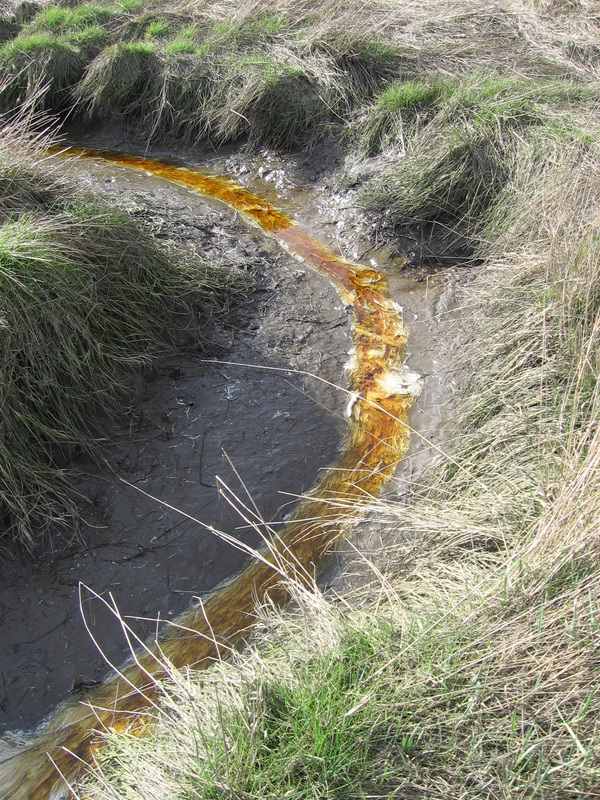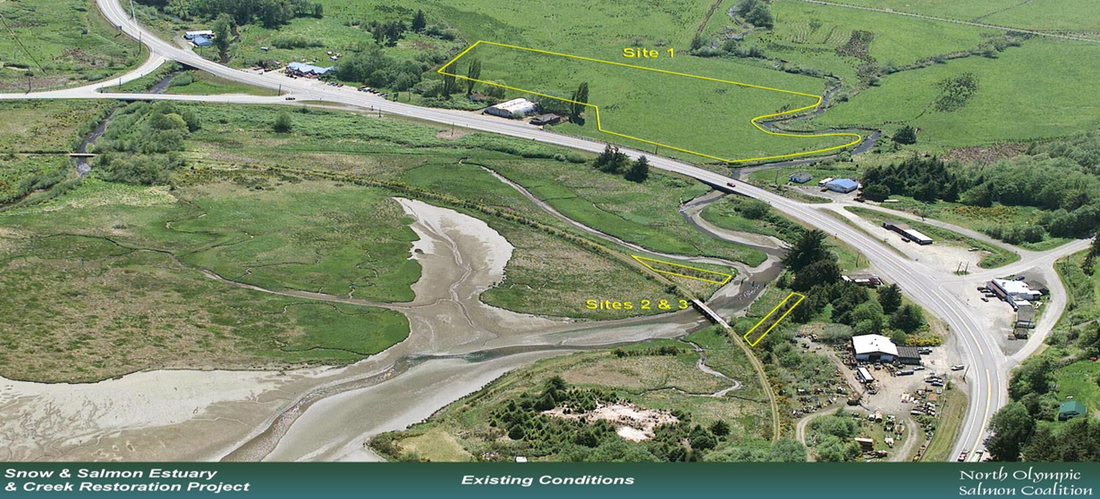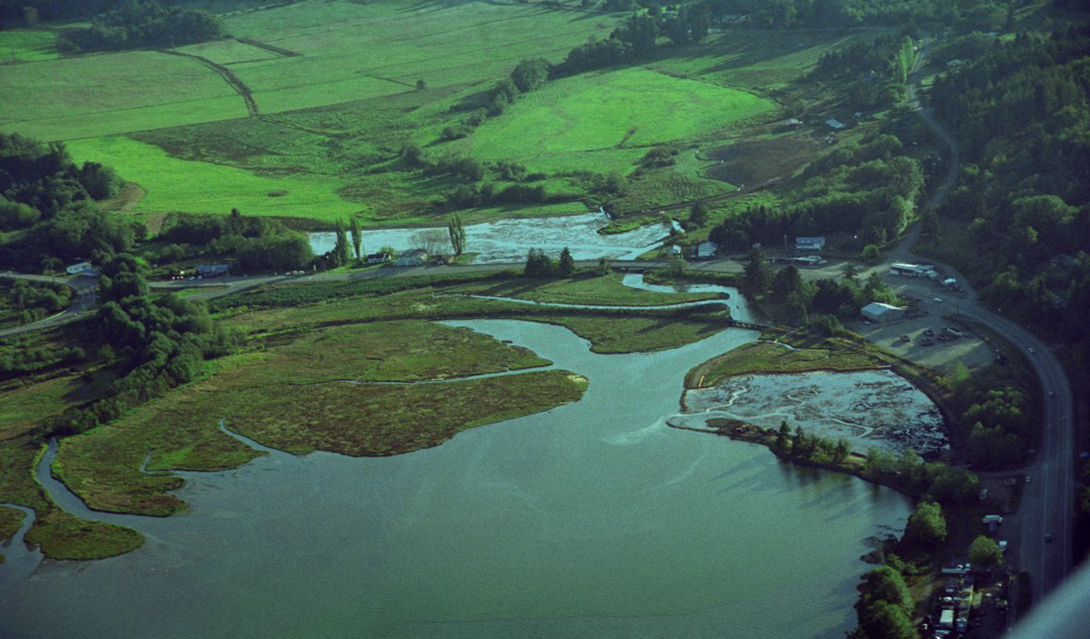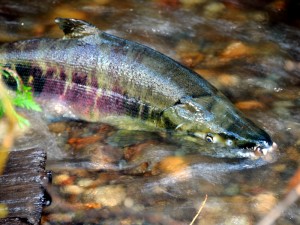Salmon and Snow Creek Estuary
History of Discovery Bay
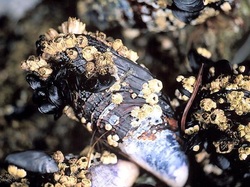
The California mussel.
Discovery Bay is where Salmon Creek and Snow Creek meet and provide habitat for a significant population of shellfish. Wood fill deposits from lumber industry in the 1950’s and the building of highway 101 has restricted tidal flow from Discovery Bay to the creeks. Historic runs of Chinook and Chum salmon have been impeded by the limited exchange of fresh and saltwater, and a reduction in habitat from fill [6].
Restoration focusThe focus of this site is the return to a pre-mill landscape. Decades of industry debris and natural chemical wastes have been deposited in the surrounding areas where the mill used to be [7]. Not only does this debris release leachates,
liquid that has entrained environmentally harmful substances, it has also filled in intertidal and shallow subtidal areas. Flow between the creeks and the bay has been restricted and tidal channel complexity reduced [6]. Key to providing habitat for commercially important organisms are the ecosystem processes that drive channel formation. Complex saltmarsh channels are transition zones for migrating salmonids adapting to changes in salinity for their anadromous life cycle. |
Restoration Management
In 2008 the North Olympic Salmon Coalition (NOSC) sponsored the restoration of three areas in the Salmon Creek Estuary. They partnered with several other organizations to remove contaminated fill debris. They removed 65,000 cubic yards of fill and restored 11 acres of habitat [6]. In 2011 the Puget Sound Near shore Estruary Restoration Project (PSNERP) received a proposal for continued restoration at the Snow and Salmon Creek Estuary. The removal of fill debris from other areas and structures that limit water flow have been proposed for removal or elevation modification+++++, such as railroad embankments and the Highway 101 Bridge. This proposal is currently being investigated by PSNERP and the Army Corps of Engineers [7].
Moving ForwardThe Salmon and Snow Creek is a project in process, initial restoration has been done but more is currently in planning. Restoration projects that involve commercially important salmonids and have support from local organizations, may move forward faster in the restoration process because of multiple stake-holder interest in the restorations completion.
|
